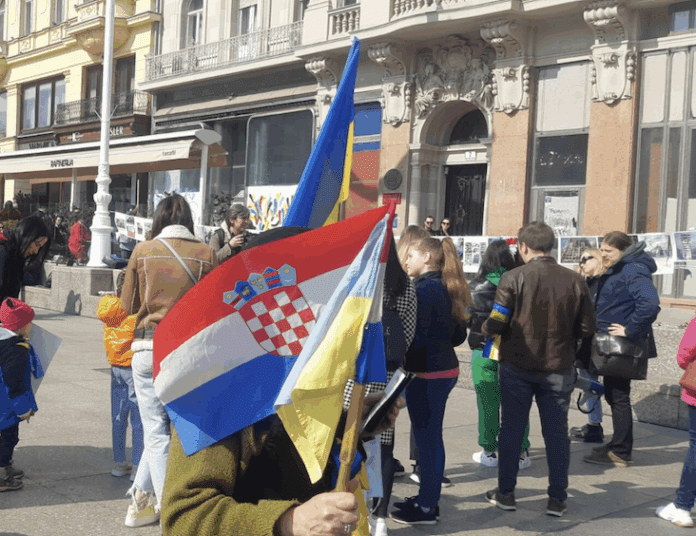Most Ukrainian families who fled the war and found shelter in Croatia are determined to stay, with many well integrated into society and the workforce. The arrival of people from Ukrain is an aspect that has certainly impacted the local community. Many Ukrainian people feel welcomed and supported in their new environment.
Temporary protection extended across the EU
At the beginning of this year, nearly 28,000 Ukrainians were residing in Croatia (precisely 27,710). In response, the Croatian Parliament extended temporary protection status for displaced persons from Ukraine, following the standard procedure across the European Union. The move has greatly affected Ukrainian families.
This temporary protection, renewed annually and currently valid until 4 March next year, grants the right to stay in an EU member state, along with access to accommodation, food, healthcare, education for children, and employment opportunities.
It was noted that the continuation of Russian aggression on Ukraine would likely increase the number of displaced people. Indeed, by mid-May 2024, there were 24,250 Ukrainian refugees registered in Croatia, a rise of over 3,000 in less than a year, indicating a growing Ukrainian presence. The increasing number of Ukrainian refugees is a result of the ongoing conflict.
Demographics and qualifications of Ukrainian refugees
According to statistics, over half of the refugees in Croatia are women, 20% are children, and 17% are men—contrary to common claims that many fled to avoid military service.
Approximately 70% of the Ukrainians who arrived in Croatia hold higher education degrees. Initially, many had to accept jobs below their qualifications due to language barriers and difficulties in diploma recognition. However, such issues have gradually diminished over time. Many Ukrainians have found work matching their qualifications as integration progresses.
Majority intend to remain in Croatia
Research shows that 69% of Ukrainian refugees expressed a desire to remain in Croatia for the next five years.
Ukrainians have generally adjusted well and integrated into Croatian society. Many have opened small businesses or continued the same type of work they did in Ukraine. Some work remotely, while others have accepted jobs in line with their skillsets, including roles in hospitality and retail.

Challenges with diploma recognition still present
As mentioned, a minority still face challenges with having their qualifications recognised, as their studies often differ from Croatian curricula. However, solutions are being explored in accordance with Croatian law.
Where Ukrainians are settling across Croatia
Ukrainian refugees have settled in various regions, with communities in Istria, around Gospić and Korenica in Lika, Zagreb and the northern parts of Croatia, as well as in Slavonia, creating distinct Ukrainian communities. These Ukrainian settlements are becoming significant in Croatian regions.
A recent study highlighted that 20,855 refugees live in independent housing—apartments or houses—while others remain in state-organised shared accommodations. Ukrainian families are adapting to life in these accommodations.
EU-wide refugee numbers and context
As of July last year, around 4.3 million Ukrainians across the EU held temporary protection status.
The highest numbers are found in Germany (1,332,515), Poland (953,255), and the Czech Republic (356,405). Notably, the Czech Republic has sheltered the most Ukrainian refugees in proportion to its population.
Before the Russian invasion in 2021, just 1,905 individuals of Ukrainian descent were living in Croatia, according to the national census.
See related story: Will Croatia Become Europe’s New Migrant Prison?

